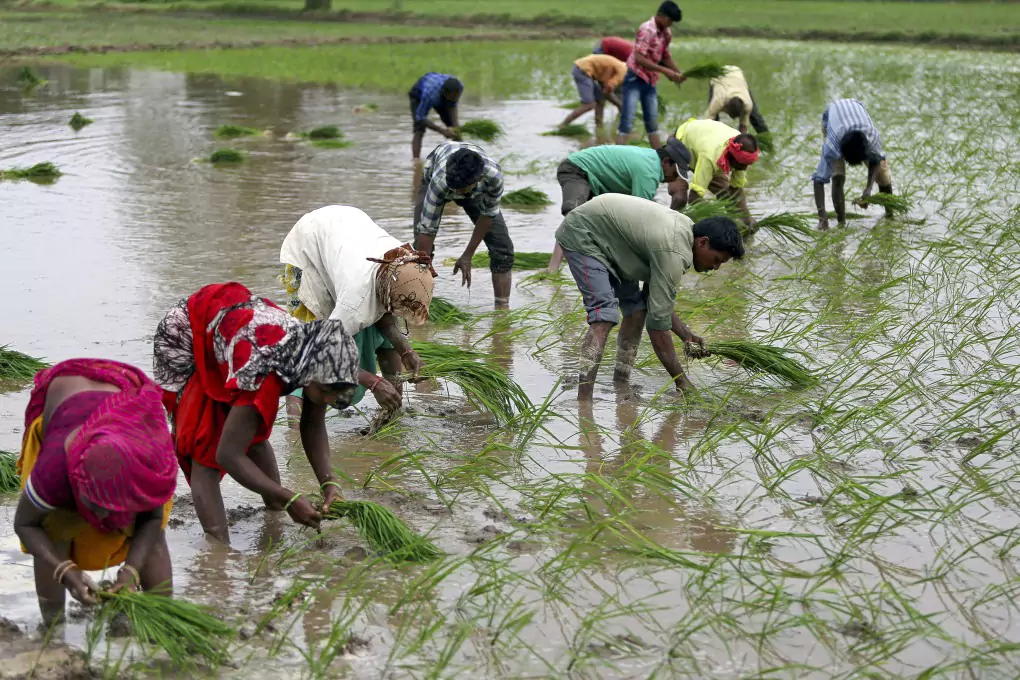India Surpasses China in Rice Production: A Landmark in Agricultural Growth
Syllabus: GS Paper III (Agriculture, Economy), Essay
India has achieved a significant milestone in agricultural production by overtaking China to become the world’s largest rice producer in the year 2024–25. This development not only marks an important economic achievement but also reflects the evolving dynamics of India’s food security, agrarian policy, and state-level innovations.
- According to data released by the S. Department of Agriculture (USDA), India produced 149 million tonnes (14.9 crore tonnes) of rice, surpassing China’s 144.6 million tonnes (14.46 crore tonnes) in the same period.
Overview of India’s Agricultural Achievement
- In 2024–25, India produced 149 million tonnes of rice, placing it ahead of China for the first time in modern agricultural statistics.
- Projections for 2025–26 also estimate India’s rice production to remain ahead, with a projected output of 148 million tonnes, compared to China’s 145.2 million tonnes.
- This accomplishment highlights India's ability to meet growing domestic and export demands despite climatic uncertainties and global supply chain disruptions.
Increase in Area under Cultivation
- According to the Ministry of Agriculture, the total area under rice cultivation increased significantly between 2023–24 and 2024–25.
- The area grew from 478 million hectares to approximately 529 million hectares, representing an increase of over 51 million hectares.
- This expansion occurred across all three agricultural seasons—Kharif, Rabi, and Zaid—with the Zaid season playing a particularly critical role.
Role of States in Driving Production
- While northwestern states like Punjab traditionally led in rice production, a major shift has occurred in the past decade.
- Telangana emerged as the top rice-producing state, surpassing Punjab and earning the title "Rice Bowl of India."
- Other significant contributors include Madhya Pradesh, Chhattisgarh, and Odisha, which have expanded both acreage and yield.
- These states have adopted progressive agricultural practices, encouraged crop diversification, and implemented large-scale irrigation and input support programs.
Governmental and Policy Interventions
Several central and state-level policy initiatives have played a crucial role in boosting rice production:
- Input Subsidies and Infrastructure Support
- Free or subsidized electricity for irrigation pumps has made rice cultivation viable in water-intensive areas.
- Procurement arrangements and decentralization of procurement agencies have assured farmers of returns on their produce.
- Minimum Support Price (MSP)
- Consistent increase in MSP for rice by the central government has incentivized farmers to opt for paddy cultivation.
- Scientific and Institutional Support
- Expansion of soil health card schemes and real-time soil testing has helped optimize fertilizer use.
- Agricultural scientists and extension services have supported farmers from transplantation to harvest stages.
Trends in Foodgrain Production
- Between 2014–15 and 2024–25, rice production increased by nearly 15 million tonnes—from approximately 134 million tonnes to 149 million tonnes.
- Wheat production also showed significant improvement—from 86.5 million tonnes in 2014–15 to 117 million tonnes in 2024–25.
- India remains second to China in wheat production, where China produces over 142 million tonnes.
- Despite this, oilseed production in India has shown a slight decline, highlighting an area that requires policy attention.
Economic and Strategic Implications
- Food Security
- The increase in rice and wheat production enhances India's capacity to ensure food security and maintain buffer stocks.
- It reduces dependence on imports and helps stabilize prices domestically.
- Export Potential
- Surplus rice production positions India as a key player in the global rice export market, particularly to African, Middle Eastern, and Southeast Asian countries.
- Environmental Challenges
- However, increased rice cultivation, especially in water-stressed areas, raises concerns about groundwater depletion and sustainability.
- Policies encouraging efficient irrigation methods like drip and sprinkler systems need wider adoption.
India’s emergence as the world’s leading rice producer in 2024–25 is a landmark moment that reflects the strength of its agricultural ecosystem. This achievement has been possible due to a combination of increased acreage, state-level efforts, scientific support, and policy measures. As India continues to consolidate its position in global agricultural rankings, the challenge remains to balance productivity with sustainability, environmental conservation, and diversification into less water-intensive and higher-value crops.













